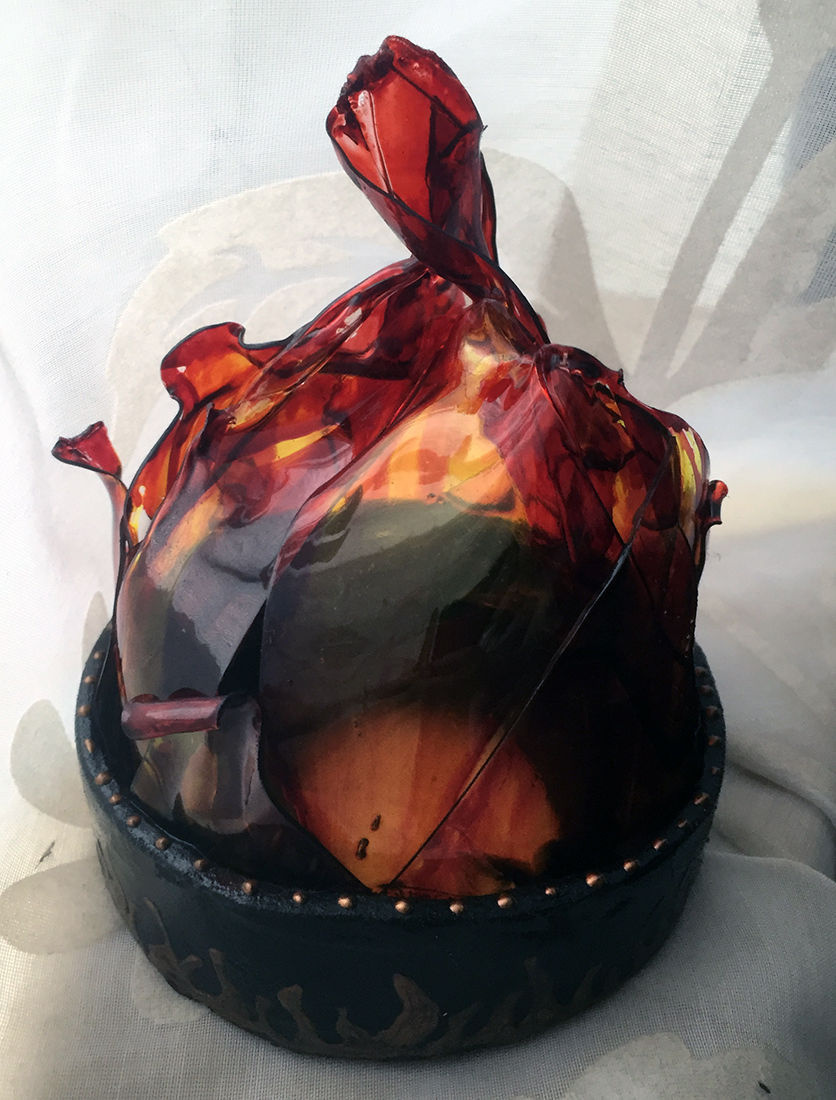How To Worbla: Material Science
- Patricia

- Feb 10, 2022
- 4 min read
Now there are already so many Worbla kinds that you can't really just talk about the "Worbla". Worbla is usually the first product, ans that is Worbla's Finest Art. Meanwhile there are already 9 Worbla kinds!
I would like to shed some light on this in this article; especially with tips & tricks from years of experience in the application. In general, the following applies to all kinds: do not throw away leftovers, but continue to use them!

Worbla's Finest Art
Working temperature: 80 - 90 degrees Celsius
Adhesive: Has a strong self-adhesive and is therefore easy to work with, also in connection with other thermoplastics.
Area of application: Particularly good for depicting rough surfaces such as leather, wood or rusty metal. I particularly like using it for a bark look, as it has fine wood pieces itself.
You have to be careful, as soon as the material is heated it really tends to stick everywhere, or to each other. If you want to smooth the WTA completely, you have to prime it properly.

Worbla's KobraCast Art
Working temperature: 80 - 90 degrees Celsius (but reacts at lower temperatures).
Adhesive: Has a very strong self-adhesive and should be applied with wet fingers (like plaster of paris). It sticks together very quickly.
Field of application: Wafer-thin impressions of objects (such as antlers) can be made with this. Since it sticks together very well, you can create seamless transitions. It is also bearable on the skin when it has cooled slightly.

Worbla's Black Art
Working temperature: 80 - 90 degrees Celsius
Adhesive: Has a medium to light self-adhesive
Field of application: Since the Black Art has no shavings or coarse components and is very smooth, this material is particularly good for making detailed impressions or working with moulds. It is thicker than the KobraCast Art and therefore one layer is usually enough to make a detailed impression. The self-adhesive is ok. Sufficient in connection with other thermoplastics. With test pieces, the Black Art can be separated a little easier if you want to process it again.

Worbla's Transpa Art
Working temperature: from approx. 120 degrees Celsius
Adhesive: Has no self-adhesive
Area of application: In order for the material to remain clear, an adhesive had to be dispensed with here. That's why I recommend hot glue for many projects. In fact, the Transpa Art tends to stick to itself when you reach a certain heat. Here you just have to be careful that it doesn't start to "melt", so please don't go at it with 500 degrees, rather feel it slowly! I use it for anything that needs to be transparent. Crystals, visors, faux glass, transparent cores and so on. Since it is only activated at very high temperatures, gloves should be worn here. Preferably ones without structure, since everything (especially fingerprints) can be found in the material.

Worbla's Meshed Art
Working temperature: 80 - 90 degrees Celsius
Adhesive: Has strong self-adhesive and mesh on one side
Area of application: On the one hand the Meshed Art is very smooth and sticky and on the other hand it has a continuous mesh, which gives the material great stability. You can also build objects that only have one layer and still not tear. For example, if you stretch thin leather onto a layer of Meshed Art, that's usually enough for decent arm protection. I use it mostly in the set-up area. Breastplates, bracers, and helmets have all been made out of it. Great for LARP!

Worbla's Pearly Art
Working temperature: 80 - 90 degrees Celsius
Adhesive: Has a medium to light self-adhesive
Area of application: It is quite similar to Black Art at first glance, but has a silkier, denser structure and is therefore not as suitable for mold impressions as Black Art. Nevertheless, the surface is nice for particularly smooth projects. It is also particularly great if you want to scatter LED light. It is also suitable for fine figures and modeling.

Worbla's FlameRed Art
Working temperature: 80 - 90 degrees Celsius
Adhesive: Has a strong self-adhesive
Area of application: The FlameRed Art is certified according to DIN 4102-1 as “B1 – flame retardant”. Due to the special production, it is also a bit more expensive than the other products. So if you don't absolutely need flame retardancy, I recommend the WBA or WPA. From the surface it is similar to the Meshed Art, only without the mesh. You can see fingerprints immediately, the structure of the material is so fine (so wear latex gloves!). Transitions can be easily incorporated, so you don't have to grind them. A great material for detailed work such as armor, fine creations or items with a completely smooth surface.

Worbla's Deco Art
Working temperature: from approx. 65 degrees Celsius
Adhesive: Has a very strong self-adhesive
Application: It is fantastic for any type of imprint. Solidified metal is also great for displaying. But beware: always keep water nearby. It sticks like hot glue and should only be touched with wet fingers!

Worbla's Crystal Art
Working temperature: from approx. 110 degrees Celsius
Adhesive: Has a strong self-adhesive
Application: One of my favorites. Once heated, it can be pressed into molds; model like plasticine; form into crystals and stick to other thermoplastics. When it is heated, the self-adhesive is sufficient. Since we also work with high temperatures here, gloves should be worn and water should be used as a separating agent. I use the WCA for almost all transparent projects. I've also made bracers out of it (with a layer of WTA underneath) and put rivets in the holes. Once the WCA has cooled, it also has amazing tear strength. The thicker it gets, the milkier it appears. After completion, the surface can be slightly treated with heat again, giving it a beautiful shine.
The photos come directly from www.cast4art.de and there you will also find further (technical) information about the materials.







